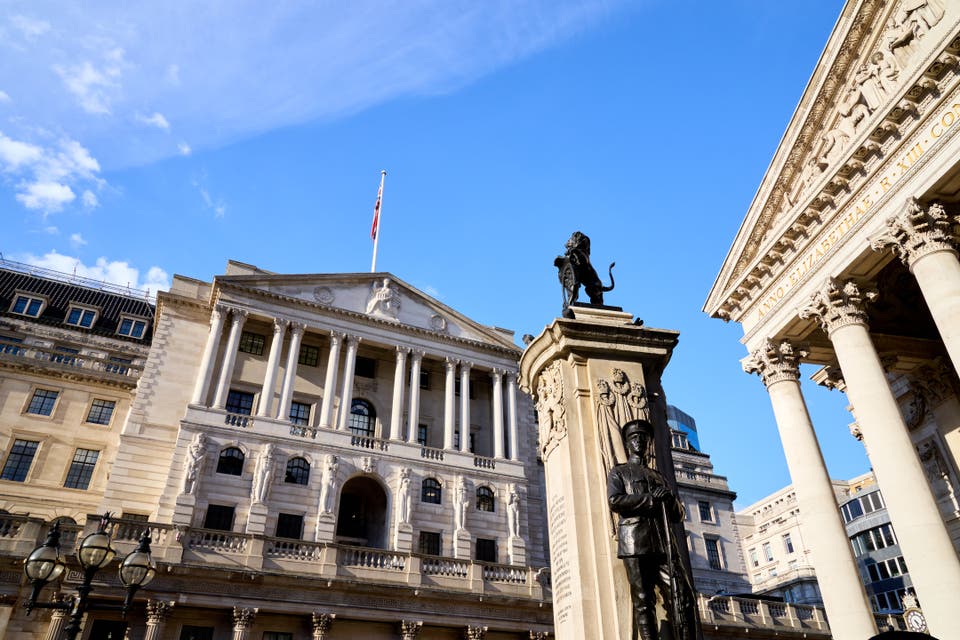Cooling pay growth ‘set to smooth path for further interest rate cuts’

Slowing UK wage growth should help pave the way for a further interest rate cut by the end of the year as it helps keep inflation in check, according to experts.
Official data on Tuesday showed that regular average earnings growth eased back to a fresh two-year low of 5.1% in the three months to July, while total pay growth including bonuses fell to 4% – the lowest level for nearly four years.
The decline was even more marked in the private sector, where average weekly earnings fell sharply to 4.9% from 5.3%.
The MPC will be encouraged by slowing private sector pay growth amidst signs that the labour market continues to loosen gradually without collapsing, which gives the green light to another interest rate cut in November
Rob Wood, Pantheon Macroeconomists
Rate-setters at the Bank of England have been closely watching wage data in their quest to cool inflation, which only returned to the 2% target in May after nearly three years amid a painful cost of living crisis.
Consumer Prices Index (CPI) inflation since edged up to 2.2% in July and cooling wage growth is seen as being key to keeping inflation reined in.
Having cut rates in August to 5% from 5.2%, the Bank’s Monetary Policy Committee (MPC) is not expected to move again with another reduction until later this year, with a hold decision widely predicted in September.
But economists said the latest wage data is supportive of another decrease to 4.75% before the end of 2024.
Rob Wood, chief UK economist at Pantheon Macroeconomics, said: “The MPC will be encouraged by slowing private sector pay growth amidst signs that the labour market continues to loosen gradually without collapsing, which gives the green light to another interest rate cut in November.”
There were mixed messages on the wider health of the jobs market, with the unemployment rate edging back once again to 4.1% in the three months to July, down from 4.2% in the previous three months.

But experts said the main unemployment rate data remains unreliable while the ONS continues to overhaul the Labour Force Survey (LFS) due to low response rates.
Other statistics point to a flagging jobs market overall, with vacancies down once again, dropping by 42,000 quarter-on-quarter to 857,000 in the three months to August.
More real-time PAYE figures also showed the number of payrolled workers fell by 59,000 between July and August to 30.3 million and the figure for the month before was also revised to a drop of 6,000.
Ellie Henderson at Investec Economics said: “Taken together, these on average point to a loosening, rather than a tightening, in labour market conditions.
“Although the headline LFS figures suggest a notable tightening in labour market conditions, given the challenges with this survey and alternative evidence that shows a decline in pay trends and a fall in vacancies we do not think this will act as a roadblock to the Bank of England continuing its easing cycle with a next 25 basis point cut in November.”